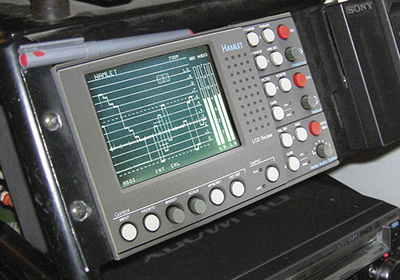Lime Pictures Keeps Video Quality High With Hamlet

Hamlet’s LCDScope HDWVA
LIVERPOOL, ENGLAND—Lime Pictures, a British Academy of Film and Television Award-winning company created from the rebranding of Mersey Television in the mid-2000’s, has emerged as one of Britain’s top independent production companies. Producing powerful thought-provoking, innovative and genre-busting popular television programs for world markets is our primary goal and we pride ourselves on being a creative repertory company with imaginative ideas and a business that embraces new technology. With all of our production facilities available in-house, we strive to maintain the highest technical standards.
We employ mobile shooting units, with at least four shoots going on every day, and sometimes as many as eight. We produce video in 1080/30p HD to obtain the particular look and feel that has become our trademark, and quality control monitoring plays a big part in this.
Our directors of photography manipulate the illumination of the scene to produce the desired look within technical specification and scheduling constraints. Their responsibilities include producing the required image by using light, color, and any other technical means, as well as checking monitor lineup and making camera adjustments when necessary. If one were to attempt such adjustments using a video monitor alone, it would be easy to produce out-of-spec video, so easy-to-use precision measuring and monitoring equipment is an absolute necessity here.
One of the best solutions we’ve found for ensuring consistently high video quality (and video which remains within established specifications) is the Hamlet LCDScope HDWVA monitoring instrument. Each of our mobile shooting units is equipped with LCDScope HD monitoring capability.
FEATURE-RICH
The Hamlet instrument is packaged in a small form-factor 3RU half-rack width enclosure, and offers a lot of flexibility for signal monitoring, including backward compatibility for composite, component, and RGB video, as well as handling SDI standard and HD signals. The LCDScope HDWVA offers an “easy-on-the-eye” LCD screen that produces white displays, and also provides audio monitoring with easy-to-read bargraphs and Lissajous displays of AES/EBU and analog audio, with AES dis-embedding. A built-in battery pack further enhances the insrument’s utility.
The professional video industry's #1 source for news, trends and product and tech information. Sign up below.
Our ongoing experience with the Hamlet LCDScopes has been universally good, and our operational staff and directors of potography have become very familiar with their operation and are quite confident that the instrument will allow them to produce the highest quality video possible. And at the end of the shooting day, isn’t that what it’s really all about?
Tony Quinn has been the technical supervisor at Lime Pictures for the past six years. He may be contacted attquinn@limepictures.com.
For additional information, visit Hamlet Video International atwww.hamlet.co.uk.
